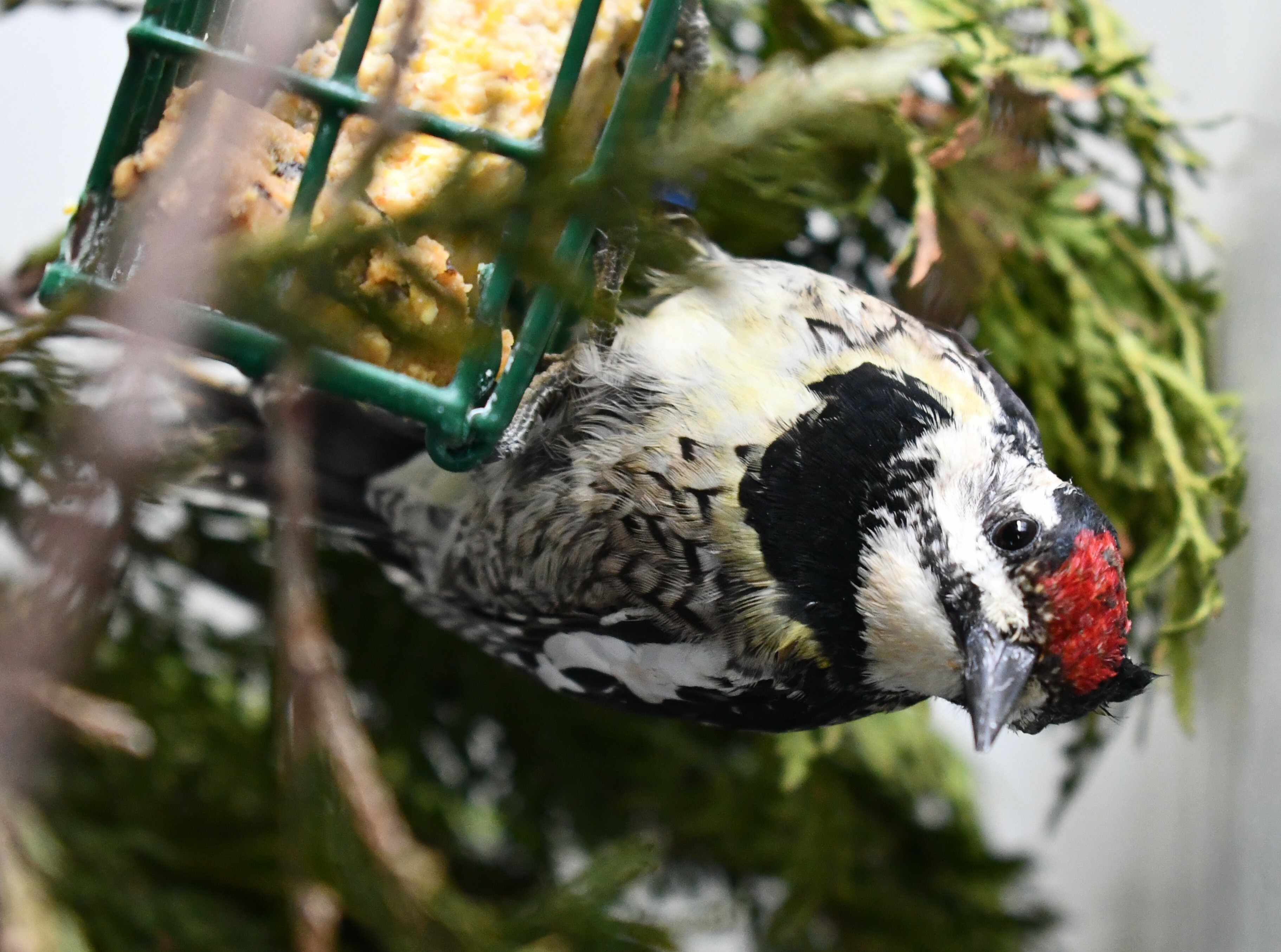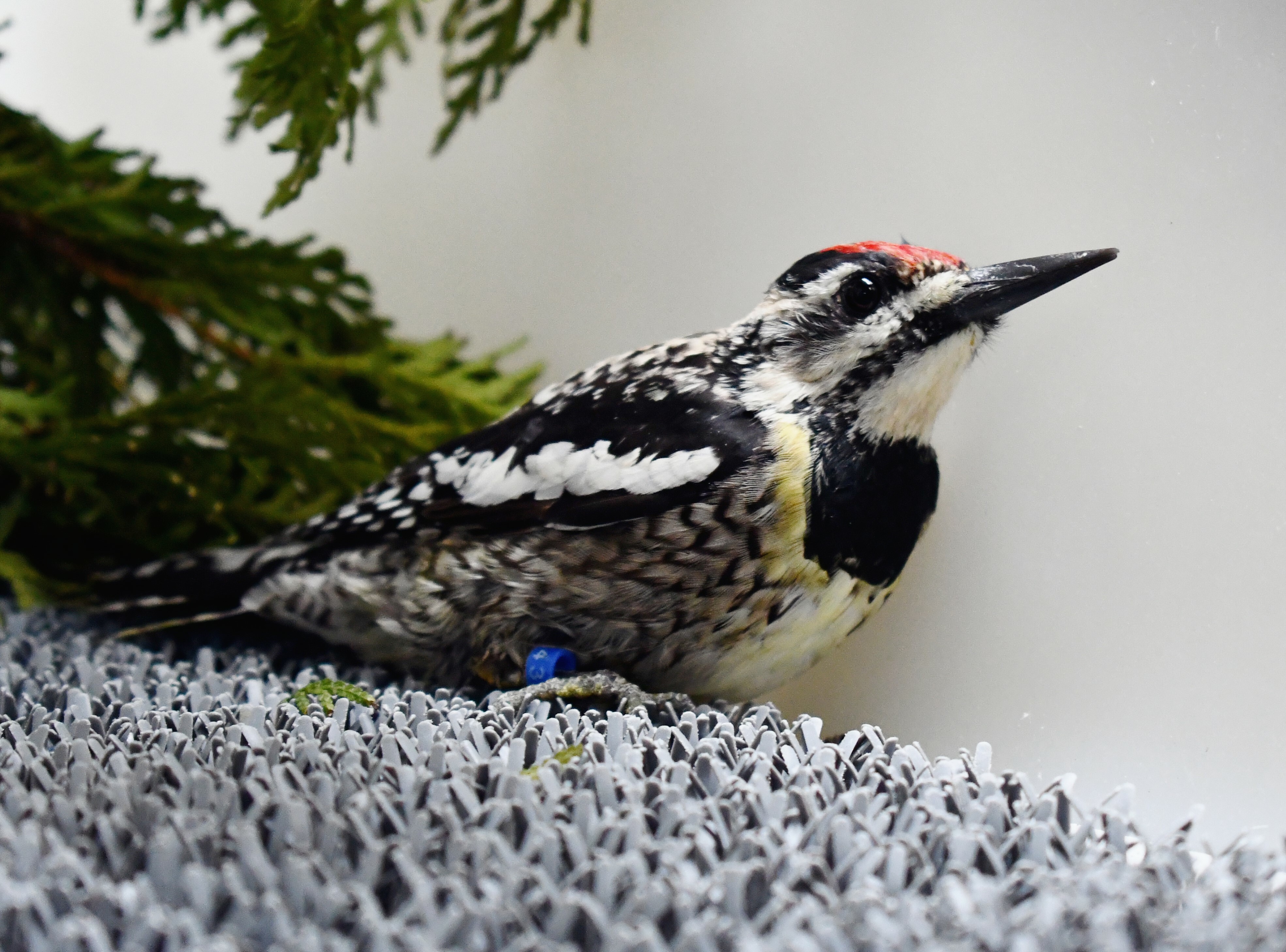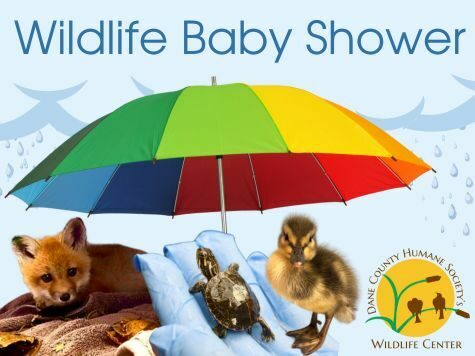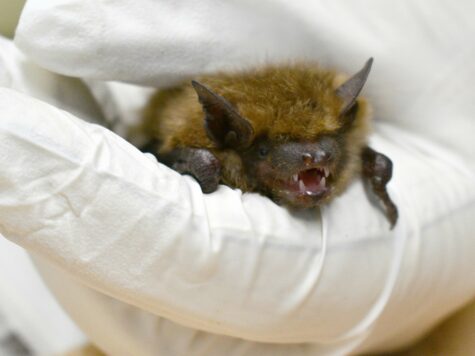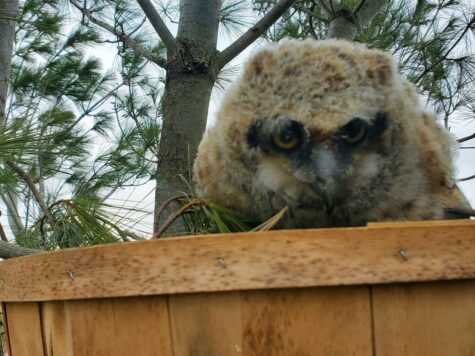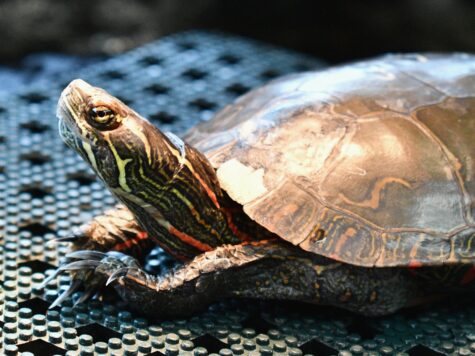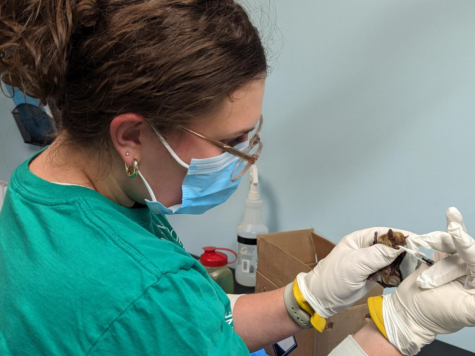Dane County Humane Society’s (DCHS's) Wildlife Center has admitted 200 individual animals for rehabilitation so far this year between January 1st and April 18th, many of which are still in treatment for sickness or injuries. In addition, dozens of patients were over-wintered and recently released. Here are a few of our favorite patients’ stories to share with our wildlife supporters:
Blue Jay #23-0053 was admitted for rehabilitation in early February 2023 after it was found injured in the middle of a busy road. It was clear that the bird had head trauma from a swollen left eye and fresh blood seen around its mouth. While that may sound gruesome, which it was, the bird was a true survivor. It was scooped up and saved by someone who knew exactly where to take it: DCHS’s Wildlife Center. The jay was probably hit by a car, incurring a beak fracture and bilateral clavicle fractures from the speed of impact, and was unable to fly away from the flow of traffic after it happened. Cases like this are not uncommon, and wildlife rehabilitators exist solely to help these kinds of animals in need. Rehabilitators aim to relieve their pain and suffering, often caused by humans, through supportive care, treatment, and offering safe spaces for them to heal.
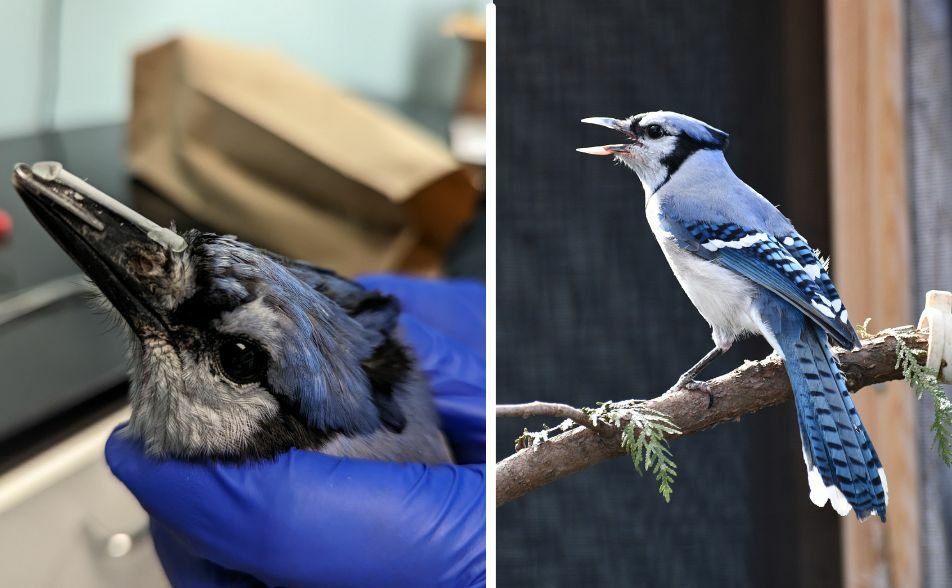
This jay received frequent exams over the last two months, thanks to our partners at the UW-Madison School of Veterinary Medicine (Wildlife Medicine Program). Between their veterinarians and our licensed wildlife rehabilitation staff, we completed advanced diagnostics, such as taking radiographs and performing ophthalmology exams; we provided the bird with cage rest and pain medications; and we applied a splint to stabilize its beak fracture. Weekly check-ups were performed to assess the bird’s progress through its recovery, and eventually the beak splint was removed. The damaged keratin — a protein that helps form skin, nails, and hair in humans or claws, beaks, and feathers in birds — eventually came off exposing lighter, healthy tissue underneath.
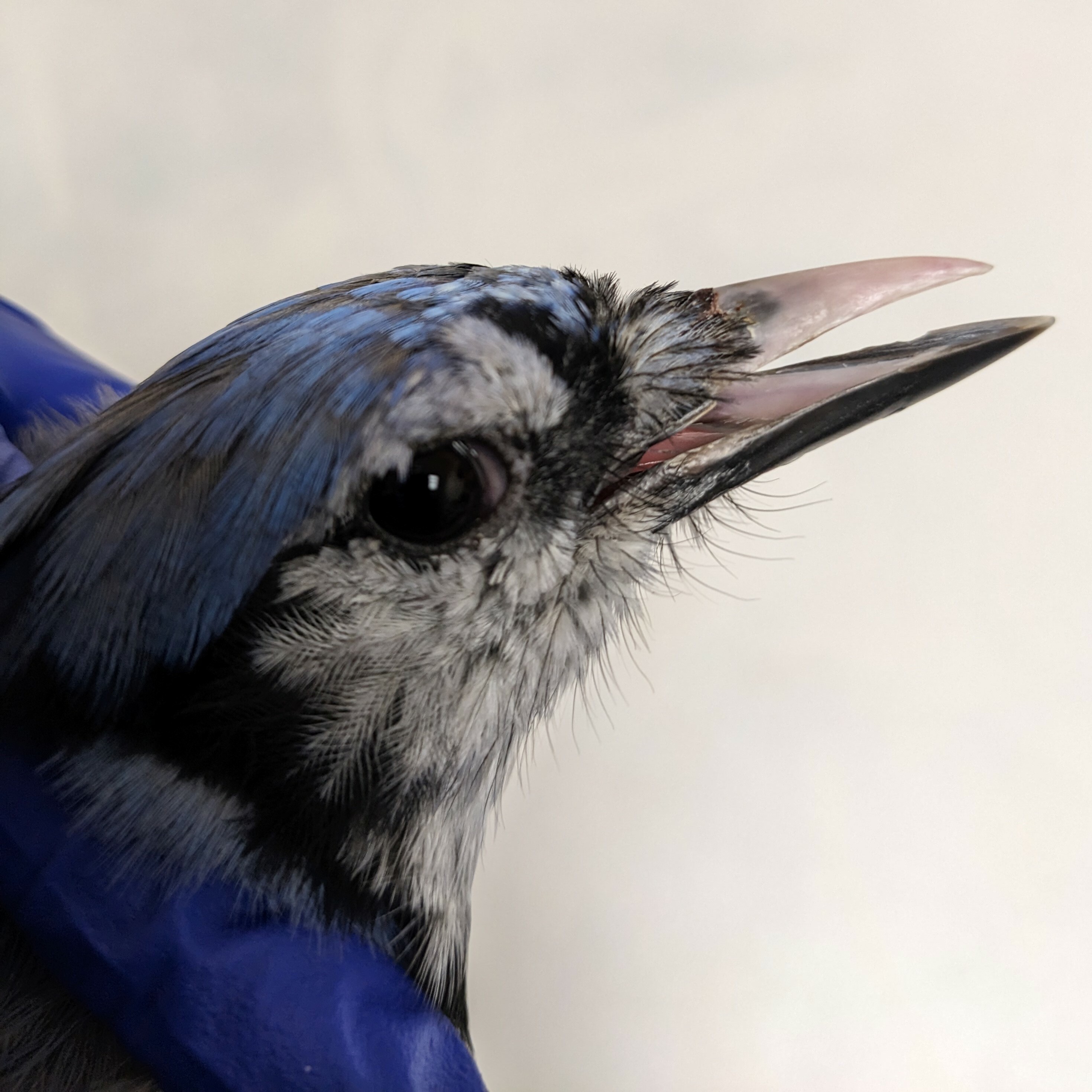
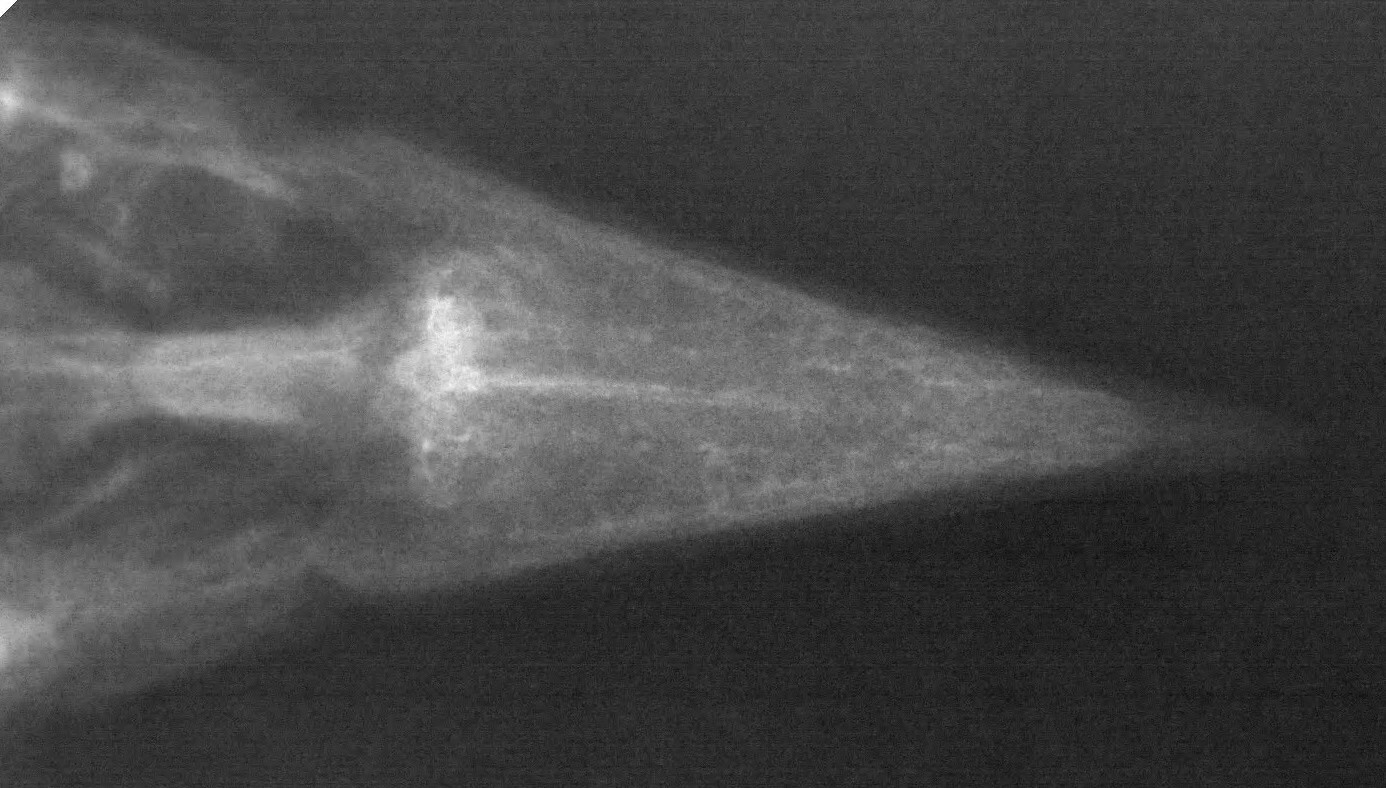
Thankfully, this jay was a great patient, eating well and being amenable to handling for daily medication administration. Rehabilitation is ongoing, but with a positive outlook, and the bird is now outdoors in one of the avian flight enclosures. We appreciate all of the work put in by staff, interns, and volunteers to help get this bird closer to release!
– Jackie Sandberg, Wildlife Program Manager
Did you know that there are 21 species of snakes in Wisconsin? The most abundant species is the common garter snake; a thin black snake with green, yellow, or brown racing stripes down their body. DCHS’s Wildlife Center admitted a juvenile common garter snake back in November 2022 because the poor guy was stuck in someone’s house! Typically, garter snakes overwinter in burrows, under rocks, or in old tree stumps. Luckily, this snake was healthy!
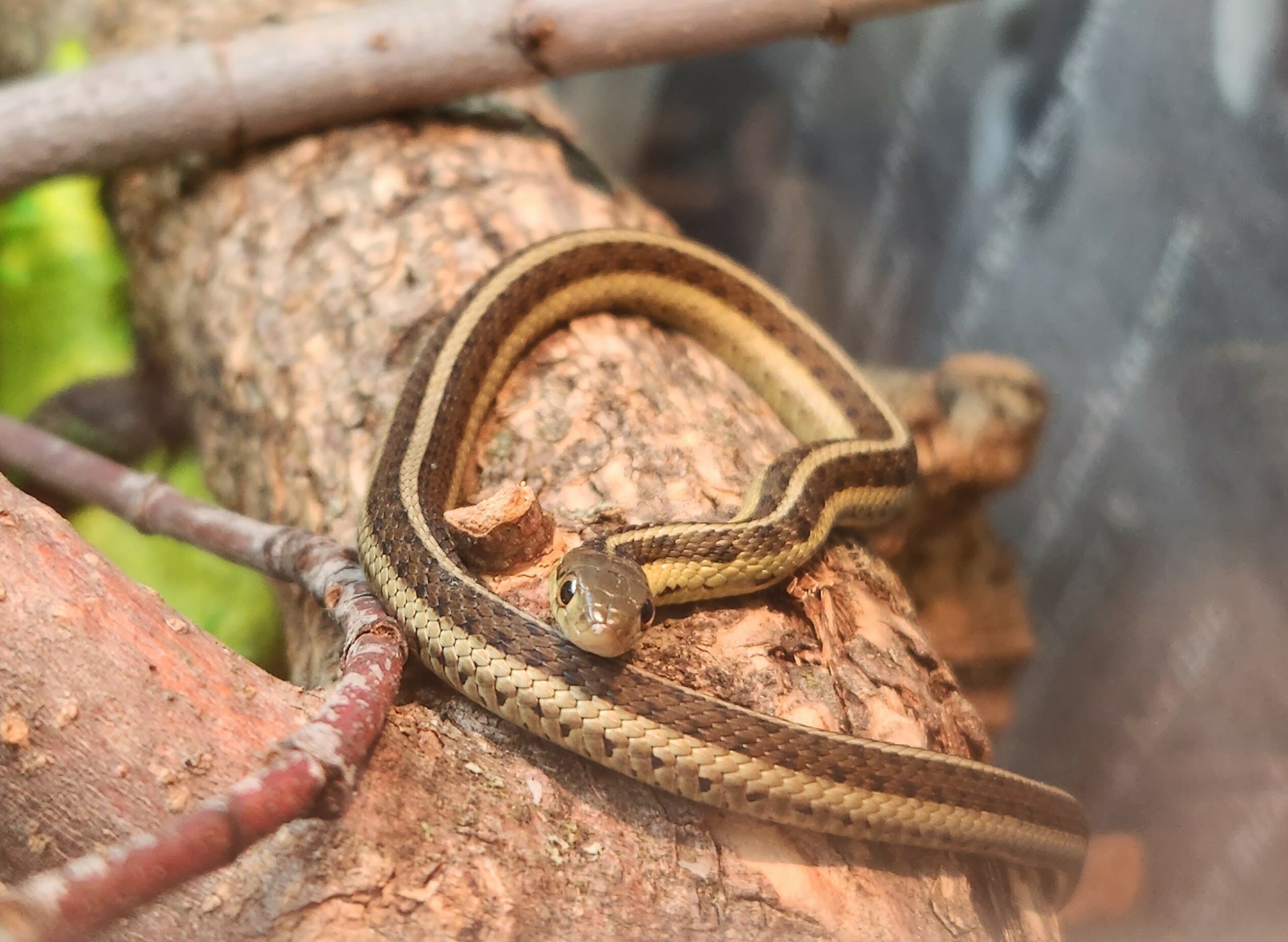
Since it was too cold in November to release this otherwise healthy snake, it overwintered here at the Wildlife Center in our Reptile Recovery Center (RRC)! While it was in care, it enjoyed racing around its terrarium during feeding time, lazing under its basking light, and most of all, eating earthworms. Garter snake #22-2516 actively hunted the earthworms that were put in its enclosure, pulling them out of the ground for its dinner. We were pleased with how it was doing in captivity, and it was finally released on April 12th, 2023 – a sunny, beautiful day.
– Emelia Rogers, Spring Wildlife Rehabilitation Intern
Yellow-bellied Sapsuckers are a common spring-time species in the state of Wisconsin, often presenting to wildlife rehabilitators during the spring and fall migrations. They are specialized birds that spend more than half of their days tapping “sapwells” of various trees, such as maple or birch trees, looking to eat the yummy nectar that’s inside. Pure sap from these trees contain up to ten percent sugar, giving them much needed energy for flight and fat storage. DCHS’s Wildlife Center has had the privilege of obtaining sap from our network of volunteers who connected us with tree tappers from Maple Valley Cooperative. Their team would normally collect the liquid to make local syrups using sustainable techniques, but a portion of the sap stock is collected and donated for our sapsuckers in rehabilitation. Our songbird volunteers thaw the frozen ice cubes each day so our sapsuckers have fresh food to eat. It's an amazing partnership that brings different organizations together with like-minded missions: helping people and helping animals.
– Jackie Sandberg, Wildlife Program Manager
